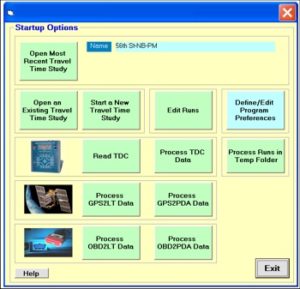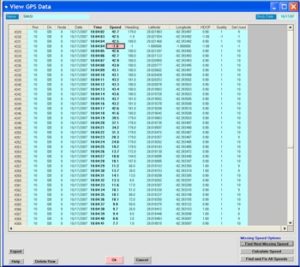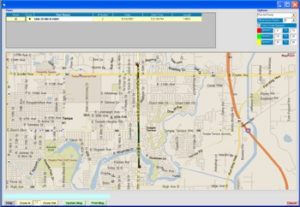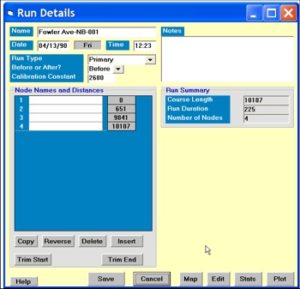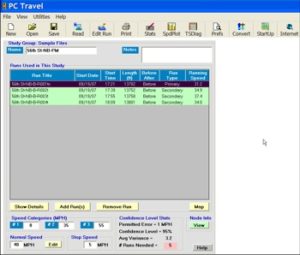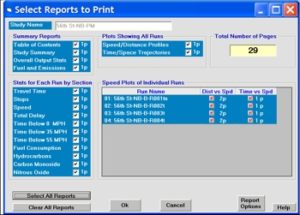PC-Travel is the software you use to process the data collected in the field which generates the travel time and delay statistics and produces the required reports. Typically you run this software in your office on a desktop computer. Here are some samples of the basic screens from the software. The screens show the typical sequence you would follow to process GPS data collected in the field, create a study, and procduce reports.
FEATURES
*Startup Options
This is the screen you see when you first start the program. It is the starting point for each travel time session. Each large green square is a button; you just click on the button corresponding to the desired command.
In this case we want to process data collected with the GPS-2LT software, so we would click on that button.
This is the screen you see when you first start the program. It is the starting point for each travel time session. Each large green square is a button; you just click on the button corresponding to the desired command.
In this case we want to process data collected with the GPS-2LT software, so we would click on that button.
*View GPS Data
This screen displays the data collected in the field. It is in the form of a grid where each row is one second of data. The main purpose of this screen is to fix any missing data points, which are relatively common with GPS receivers (the car may have gone through a tunnel or parked under an overpass). In this case there is one data point missing, which is easily fixed with one click of a button.
Once all of the data is corrected, the software creates individual runs and stores them in a folder on your computer.
This screen displays the data collected in the field. It is in the form of a grid where each row is one second of data. The main purpose of this screen is to fix any missing data points, which are relatively common with GPS receivers (the car may have gone through a tunnel or parked under an overpass). In this case there is one data point missing, which is easily fixed with one click of a button.
Once all of the data is corrected, the software creates individual runs and stores them in a folder on your computer.
*Map
This screen shows a street map of the route with points plotted to mark the GPS points collected in the field. The maps are available for free from the Internet so you never have to worry about getting any map files. You can plot one or more runs and color code the points to show three different speed ranges; this is useful to show areas of congestion. You can edit the points on the map as needed and you can mark specific points as nodes. Click Here For Video
This screen shows a street map of the route with points plotted to mark the GPS points collected in the field. The maps are available for free from the Internet so you never have to worry about getting any map files. You can plot one or more runs and color code the points to show three different speed ranges; this is useful to show areas of congestion. You can edit the points on the map as needed and you can mark specific points as nodes. Click Here For Video
*Run Details
This screen shows everything the software knows about a run. You can edit some of the parameters of the run, you can edit the individual data points either on a map or on graph of the data, and you can enter the node names which typically are street names at intersections.
This screen shows everything the software knows about a run. You can edit some of the parameters of the run, you can edit the individual data points either on a map or on graph of the data, and you can enter the node names which typically are street names at intersections.
*Study Summary
This is the main screen in the program. From here you can select the runs you want to include in a study, map the data to edit one or more runs, save the data to a study file, print reports and graphs, and many other options.
The normal sequence is to select the runs you want to include in the study, set the study parameters at the lower left of the screen, save the study, and then print the reports.
This is the main screen in the program. From here you can select the runs you want to include in a study, map the data to edit one or more runs, save the data to a study file, print reports and graphs, and many other options.
The normal sequence is to select the runs you want to include in the study, set the study parameters at the lower left of the screen, save the study, and then print the reports.
*Select Reports
This screen is used to select which reports you want to print or save to a PDF file. There are many different reports and graphs in PC-Travel; in this example if you printed everything it would take 29 pages. You normally only print reports with 3 or 4 pages but all of them are available when you need them.
This screen is used to select which reports you want to print or save to a PDF file. There are many different reports and graphs in PC-Travel; in this example if you printed everything it would take 29 pages. You normally only print reports with 3 or 4 pages but all of them are available when you need them.
